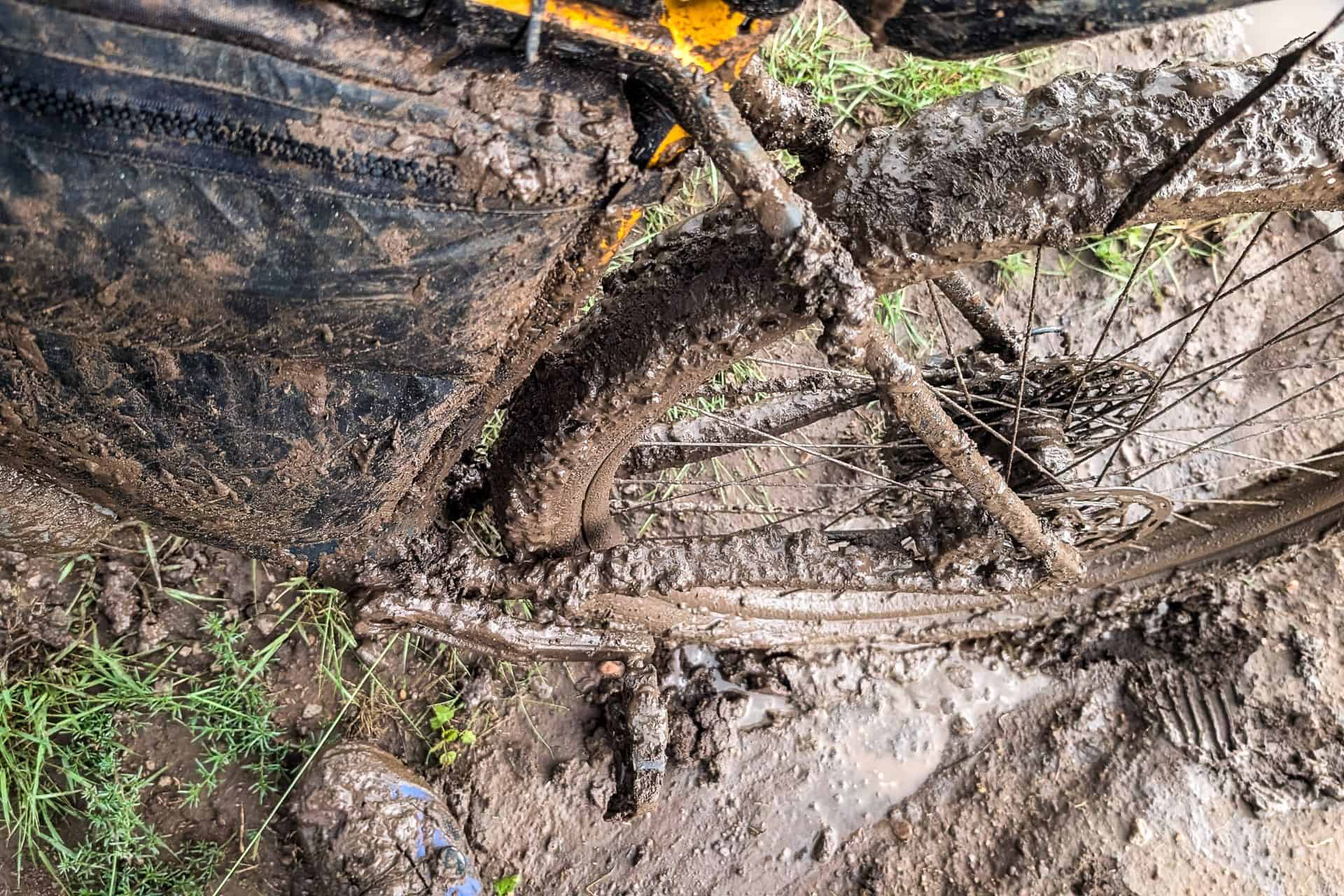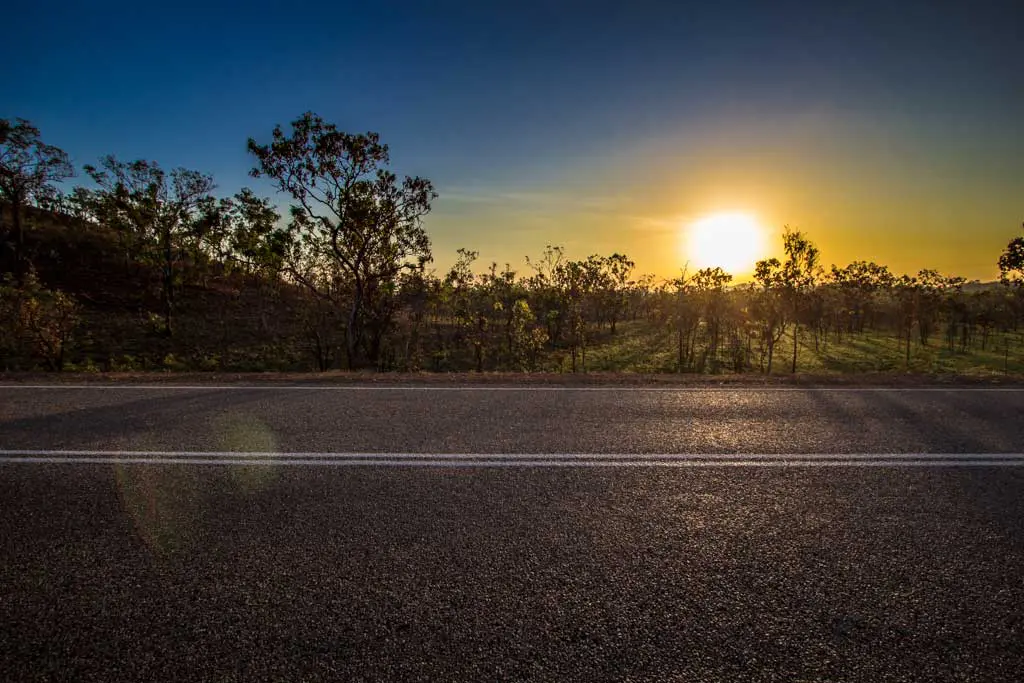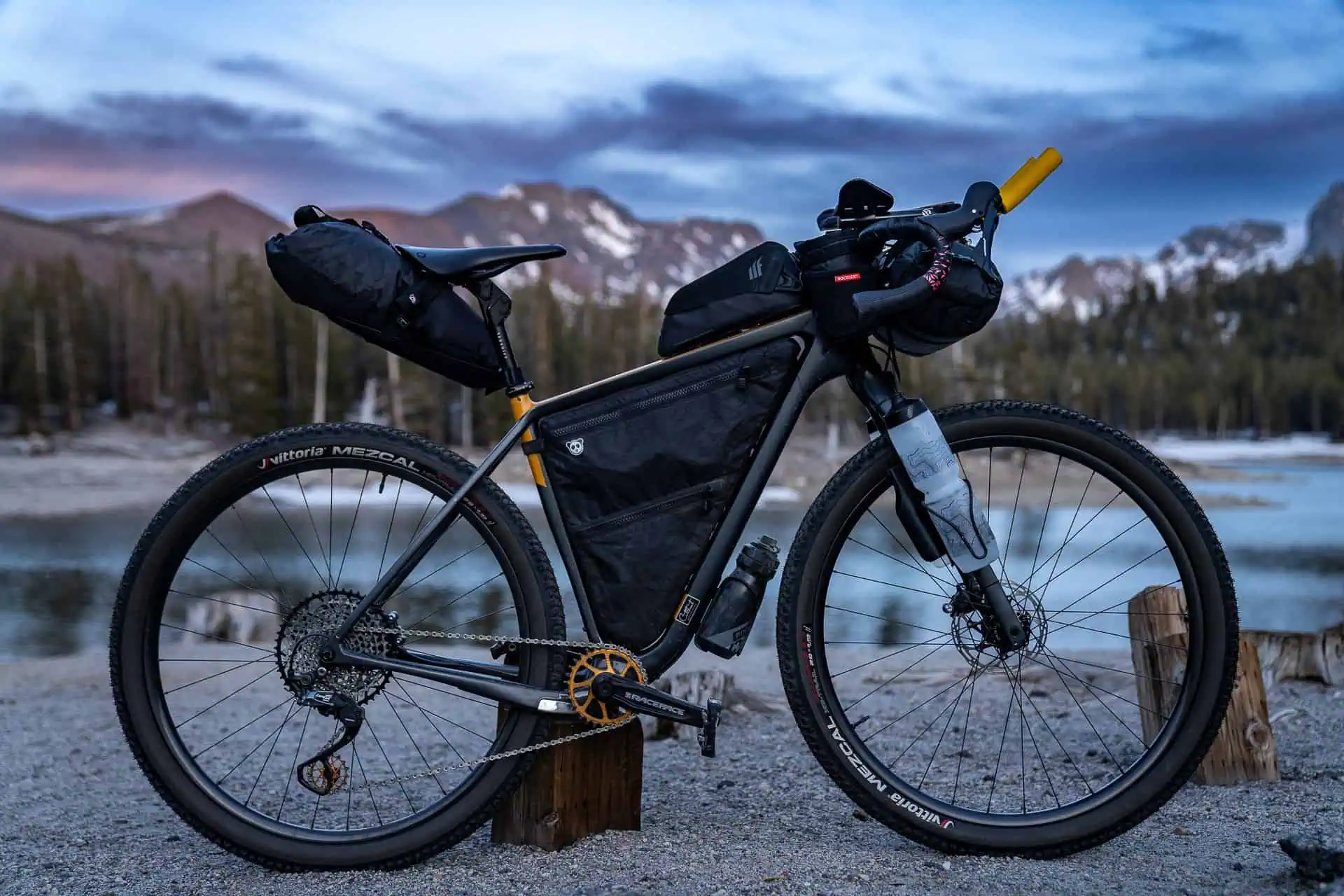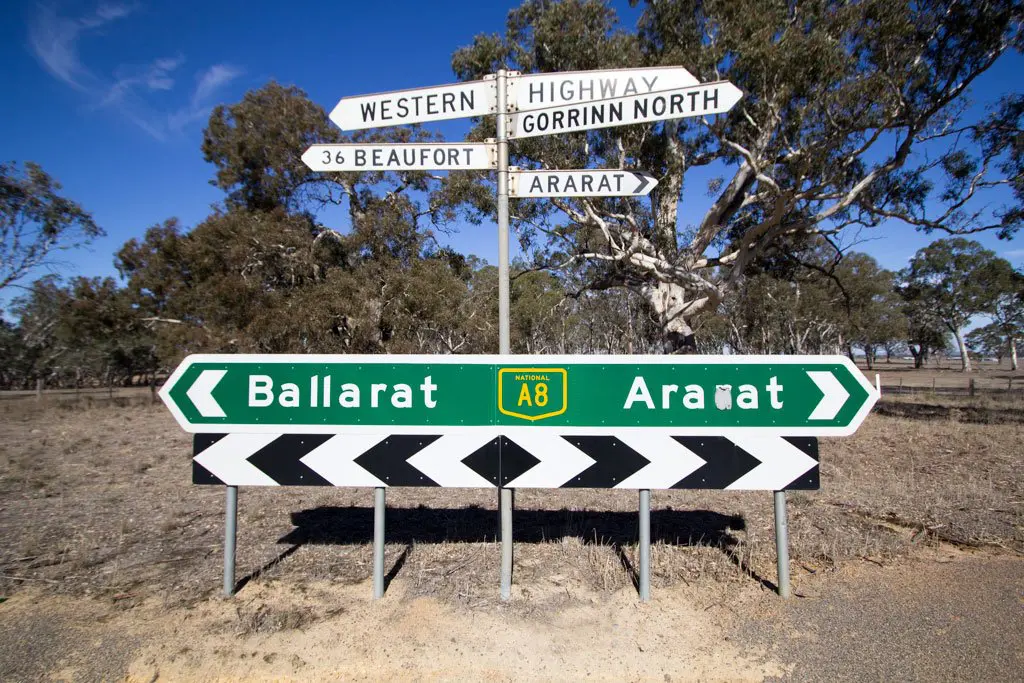Racing the Tour Divide: What Went Wrong
The Tour Divide now behind me, I can say that it was both everything and nothing like what I expected. Despite all my research, training, and gear preparation, like any big adventure, a lot did not go as planned (and even more caught me off guard). Best case scenario for the Tour Divide may have been everything that I had planned to go wrong, to go wrong.
But rarely is life so simple, particularly on the Divide.
Many of the fears I had before the Tour Divide didn’t quite live up to the hype (some certainly did), and I’m not sure if it was a good thing or a bad thing that there was so much more awaiting me that I hadn’t even considered. That said, the majority of the issues I encountered on the Divide could have been better planned for or, in some way, mitigated had I been granted the appropriate foresight.
All that said, here’s everything that went wrong on my race of the Tour Divide.

The Weather
Perhaps the biggest curveball of the Tour Divide was the weather. Yes, this is obviously something that can be highly variable and shift rapidly during a day or change dramatically between years, but the weather I encountered on the Tour Divide was nothing like any of the scenarios I had imagined beforehand. I discuss this in the things that surprised me on the Tour Divide, but where I went wrong was with my gear.
While I was in Banff waiting to start the race, a winter storm warning was issued for the area through which the Tour Divide passes for the first few hundred miles. I visited every outfitter, gear shop, and bicycle store in town, looking for arm warmers and leg warmers (something I had omitted from my original packing list). Ultimately, I found some for my legs, but couldn’t find anything for my arms. My hope was then that it wouldn’t be too cold and that the storm would pass without my freezing.
However, the storm was cold and persistent, and by the time I arrived in Fernie on the second day, I was ready for more warmth. I bought a baselayer for my top and legs (I had to visit multiple stores to find these) as well as arm warmers. By some miracle, I managed to stay warm, but I can’t say that my hands were never in danger of being frostbitten. Despite bringing multiple pairs of gloves, none of them did the job of keeping my fingers warm on long frigid descents.

The Calorie Consumption
I heard someone say before starting the Tour Divide that I should be eating like it’s my job – and eat I did. Every time the thought of food entered my head, I would eat, whether or not I was hungry. There was only so much space in my frame bag for extra food, but I only got compact and calorie-dense snacks to ensure I would never run low (except for that one time).
No, it wasn’t eating while on the bike that gave me problems; it was eating while in town.
Every time I got to town, I would gorge myself. A quart of chocolate milk, a loaf of bread, a sleeve of cookies, a pizza, a burger, a family-size bag of M&M’s, an ice cream sandwich – it was disgusting (and delicious). Now, this wasn’t the issue; the food was easy to get and even easier to ingest. The problems started once I left town. With an ungodly number of calories in my stomach, I would pedal out of town and, nearly every time, become incredibly tired, like sleepy tired.
It was that overwhelming level of sleepiness that I imagine is what’s responsible for people falling asleep at the wheel. What energy I wasn’t expending to keep my legs moving was devoted to keeping my eyes open as my body fought furiously for the finite resource, attempting to digest the week’s worth of calories I had just crammed inside it. Ultimately, the sleepiness would abate, and I would just be exhausted from endless days of cycling with zero sleep instead of being tired from digesting my town food, which may have helped in a way.

The Foot Swelling
One thing that I did not expect, which caused me some problems on the Tour Divide, was the extent to which my feet swelled. I already have wide/high-volume feet, and fortunately, I was able to find some gravel shoes that fit me pretty well. During training and for the first couple of days on the Tour Divide, I experienced no issues with the shoes, and I would highly recommend them. However, during training, I wasn’t riding all day, every day, with zero rest and zero regard for my well-being.
I’m not sure at what point my feet started swelling during the Tour Divide, but once they swelled, they remained swollen until the end. Ideally, I would have slept with my feet elevated so that, for a couple of hours every night, I could fight off the swelling, but I never did (probably because my brain wasn’t functioning at full capacity on the Divide). After finishing the ride, my toes were numb for months, particularly my big toes, which were the last ones to regain feeling.
During the ride, the only thing I could do to relieve the pressure was to loosen my shoes slightly and keep pedaling.

The Mid-Ride Pit Stop
In Steamboat Springs, Colorado – one of the larger towns along the Tour Divide – I decided to get my bike refreshed with a change of brake pads, a new chain, a quick clean, a brake bleed, a wheel check, and some fresh sealant (and just a general checkup better to ensure a successful second half of the trip).
The first shop I went into didn’t have any space. The second shop I went into looked more like a ski shop, but they had lots of bikes out front, and the guy said he could take care of me, so I trusted him. I left my bike, went to lunch, came back, and my bike was still in the stand, looking like nothing had been done. Apparently, the guy who was working on it left to do something for his wife while I was gone, and things “were going to take a little longer.” I went to get my resupply, I went to the post office and sent home some things I was no longer using (notably my base layers, arm warmers, and leg warmers), and then I went back to the shop to find my bike still not done.
When it was finally assembled and ready to go, some serious skipping issues were occurring with the chain. However, after a little trial and error, I decided it wasn’t worth taking any more time out of my day, and I left. I’m not sure if I went to the wrong shop, if I should have had more parts with me on my bike, or if I should have skipped this stop entirely, but I was extremely frustrated by how long it all took. The good news is my bike made it to the end (and to this point) with no mechanical issues, which I was incredibly grateful for.

The Final Stretch
Thinking to yourself that you’re almost to the end of the Tour Divide is a dangerous game to play. It doesn’t get any easier as you get closer to the end; you only get more tired. I made the mistake of thinking that the final few hundred miles would somehow come easily. They did not.
It was hot, I was tired, and the singletrack CDT section right at the end was technical and frustrating. On top of it all, a massive thunderstorm rolled in right over the course with some of the most intense lightning I’ve ever seen. It was so gnarly that I took cover in a wash for a bit, despite being incredibly close to the finish line. And I got tagged right in the leg by a cactus as I exited onto the final section of road.
Don’t ever, at any point, make the mistake of underestimating the Tour Divide – even with the end in sight.

The Saddle Sores
Perhaps one of the most significant issues that arose on the Tour Divide was the extremely painful saddle sores I developed. Extremely painful. The fact that the first three days of the ride were done almost entirely in the rain and snow probably didn’t help (as the moisture content in my chamois was off the charts). It also probably didn’t help that I had only a single chamois, which I managed to wash twice in a machine and once in a river.
I brought a pair of merino wool boxers that I slept in every night (to let my bottom breathe), but the time my butt spent out of my chamois each night wasn’t enough to let it fully recover. The best thing you can do for saddle sores is not ride your bike which isn’t an option on the Tour Divide. My saddle sores got so bad that I took to riding most of the time on my aero bars so that I could keep a little bit of pressure off my butt.
They got so bad that I even asked some other riders to look at my butt for me to see if they looked too awful or too infected for me to continue on. The good news? They didn’t look disgusting enough to stop me from finishing the ride.

The Lost Gear
My gear for the Tour Divide was so meticulously chosen that if you had told me ahead of time that I would lose any of it and still be able to continue, I probably wouldn’t have believed you. But as things go on adventures such as this, nothing was to plan. All together, I lost a strap off the back of my seatback bag (and had to use Voile straps as a substitute – something to keep handy on a ride as long as this one), both of my one-liter water bottles, a water bottle cage off my fork (I have no idea how this happened), a couple of lightweight screws, the adapter keeping my inreach attached to my aero bars, and the functionality of one of my bib’s side pockets.
The water bottles (and the water bottle cage) were probably the most frustrating things to lose, as I was never able to replace them with bottles of a similar size. That said, I never ran out of water, and when I got to New Mexico, I used a running vest with flasks for additional water storage (and energy drink storage). I’m glad I carried some extra gear – of course, everything I carried as extra or spares, I didn’t end up needing – but I suppose it wouldn’t be an adventure if I didn’t end up losing something along the way.

The Crash(es)
My crashes on the Tour Divide fell into two categories: the near-catastrophic crash on day one, and occasionally falling off my bike due to extreme fatigue.
The first crash was the worst crash I’ve ever had on a bike. On day one of the Tour Divide, there’s a nice section of singletrack that I was feeling particularly excellent on. I got going maybe a little too fast, and I clipped a tree with my handlebars going over a rise. I went over the bars, crashing hard, and landing on my thigh. There were other riders around (early on, everyone’s pretty bunched up), and one guy right behind me who saw the whole thing. After taking a quick inventory, I got up relatively unharmed, but with a throbbing pain in my thigh. I ended up with a squiggly wheel (something I was able to ride into Fernie and have fixed) and a large bruise that lasted the entire ride.
The rest of my crashes were either the result of my not paying attention to the terrain (looking at my phone or something interesting along the way) or literally falling asleep on my bike (this happened a couple of times on my final push to the border). None of these crashes were particularly bad, but they could have been race-ending had I landed badly (most of these sleepy crashes occurred in semi-slow motion and never while I was speeding downhill).

The Longest Resupply
Resupply (i.e., obtaining more food while riding the Tour Divide) wasn’t something I invested a lot of time in beforehand. Looking at the map, it seemed that most towns or stops were close enough together that I would pass by somewhere I could get food regularly, and for most of the ride, this was indeed the case. It wasn’t uncommon to be in a town every day or even pass multiple towns in a single day while riding.
However, the stretch from Grants, New Mexico, to Silver City, New Mexico—approximately 240 mi / 386 km—was one where I didn’t reasonably expect to need so much food. Between Grants and Silver City (both towns with plenty of resupply options from supermarkets to gas stations), you pass Pie Town, but Pie Town has practically nothing available for resupply. There is pie and some food available if you happen to pass by while the shops are open, but I didn’t find anything suitable for resupply while I was there. South of Pie Town, I got caught in a huge thunderstorm and got jammed up by a section of peanut butter mud that almost forced me to camp and wait for it to dry out.
Riding through the night to reach Silver City, I had to severely ration my food so I wouldn’t run out. I didn’t starve, but I was incredibly hungry for this section, and I was worried about how my body would react to not being force-fed calories for the nineteenth consecutive day. Ultimately, I made it to Silver City and was able to stock up on food for the final stretch, but I would be lying if I said I wasn’t worried about making it there.

Affiliate Disclosure: This page may contain affiliate links, which means I may receive small commissions for purchases made via these links at no additional cost to you. This helps pay the bills and keep the site up and running. Thank you for your support!






